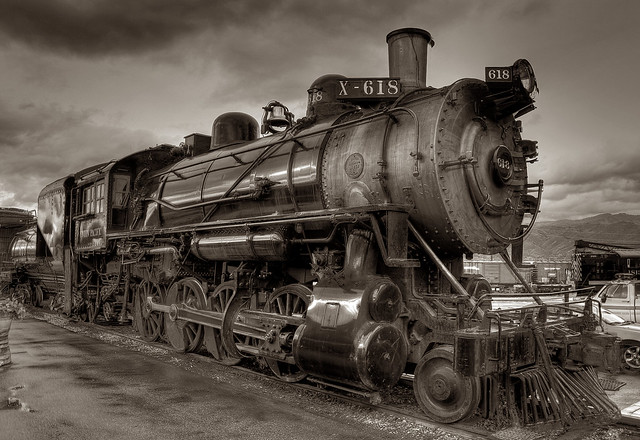Trickle Up
The Benefit of Investing in America’s Poor
By: Sergio Robles Jr.
President
Ronald Reagan was a vocal advocate for free market policies that included
financial deregulation, which would cut taxes on America’s wealthiest citizens.
The logic is simple and integral to job creation according to laissez-faire
supporters. If the rich are allowed to further invest their capital in the
market, the market will respond to the increase by creating jobs and the
process trickles-down from there.
The
one problem with this practice is that it assumes that the market and
corporations have the ability to grow. In the situation where a company has
saturated the market, money saved from tax cuts cannot go into reinvestment
because there is no room to grow. Excess capital is therefore put into savings,
where they can presumably earn more capital from the market interest rate. Under
this model, companies such as AT&T, Lockheed Martin, and Dell would be
considered to be at capacity (Zajac).
The
opposing side to this argument is ‘trickle-up economics,’ which is most often
associated with microfinance. Microfinance is the disbursement of small loans
for an individual to start a business, and is most common in the developing
world. A more domestic example of trickle up economics would be investing in skills
and training programs for America’s lower quartile population (The Economist).
Investing
in America’s poor and uneducated is an investment on the country as a whole.
This population is often surviving on a minimum wage, subsidized by government
assistance programs. In figure 1.1 we see the difference in salary between
various levels of occupations in the same field, the field in particular being
nursing. I used a standard minimum wage occupation as a baseline because most
of these jobs are interchangeable and require the least amount of specialized
skills.
From
there I added the three most common types of nursing credentials according the
Bureau of Labor Statistics. The facts and figures presented are based on median
salaries nationwide, it is important to note that there will be discrepancies
regionally and when an individual starts out in the industry. The first type of training available is a certification
as a Certified Nurse’s Assistant (CNA) which is available as a onetime class
and offers a modest increase in hourly wages The second type of training is as
a Licensed Practitioner Nurse (LPN), which is available as a year-long diploma
program at most city colleges. Lastly, we have a Registered Nurse (RN/ADN), who
has earned their Associate’s Degree in Nursing, and earns the highest salary of
the group, as a result of the largest investment (U.S. Bureau of Labor
Statistics).
|
Figure 1.1:
Nursing Occupations (Based on 2012 BLS Facts and Figures)
|
Occupation
|
Amount
by hour ($)
|
Amount
Annually ($)
|
Cost
Associated with Degree
|
Time
Cost
|
Minimum
Wage Occupation
|
$8.00
|
$16,640
|
N/A
|
N/A
|
CNA
(Certified Nurse’s Assistant)
|
$11.73
|
$24,400
|
$1,500
|
5
Weeks
|
LPN (Licensed Practitioner Nurse)
|
$19.97
|
$41,540
|
$2,000
|
1
Year
|
RN/ADN
(Registered Nurse/Associate’s Degree in Nursing)
|
$31.48
|
$65,470
|
$4,500
|
2/3+Years
|
NPR recently
published that on average, it costs $11.20 an hour or $23,300 annually to live
in the state of California. Using the occupations and salaries listed in Figure
1.1, I constructed a graph that shows their earning potential over a period of
5 years, using both the costs associated with that option as well as the
salary/benefits (Green).
The
graph displays all four occupations as having negative returns in the first
year, with the most costly options of LPN and RN causing the individual to
incur serious debts. This is known as barriers to entry due to opportunity
costs. The price of the training programs themselves are relatively low, but
when an individual has to forgo earning a wage in favor of education they find
themselves in deeper debt than they would have been otherwise. Under this
criteria, the most costly option is the one that also has the greatest earning
potential at the end of the five year period.
It is
no surprise that individuals with limited resources find themselves with very
little options as giving up a steady wage in favor an opportunity a year from
now is an unfavorable decision when rent and utilities are due every month. In
this situation, it becomes imperative that government agencies and other public
works programs help individuals in this predicament. If and when governments
create incentives for individuals to further pursue education and training
programs to earn a higher salary, the return on investment is higher as they
can tax a higher salary more. This type of investment is not singular or exclusive
to the individual, but all-encompassing. When multiple individuals in the
community earn more, property values increase, there is job creation and the
community at large is lifted into economic self-sufficiency.
In
closing, I leave you with these words by Hubert Humphrey: “a country is only as
rich as its poorest citizens”.
Works
Cited:
Green, Matthew. "How Much Does It Really Cost to Live in
California?" The Lowdown RSS. NPR, 23 July 2013. Web. 29 July 2014.
"Trickle-up Economics." The Economist. The
Economist Newspaper, 16 Feb. 2013. Web. 28 July 2014.
"U.S. Bureau of Labor Statistics." U.S. Bureau
of Labor Statistics. U.S. Bureau of Labor Statistics, 01 Jan. 2012.Web. 27 July
2014.
Zajac, Brian. "Nine Famous Companies That Can’t
Get Bigger." 247wallst.com. 247wallst, 05 Apr. 2013. Web.
29 July 2014.

